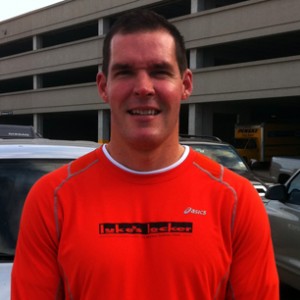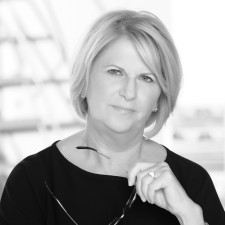Luke’s Locker: How One Retailer Became an Institution

An Interview with Matt Lucas, President & CEO of Luke’s Locker
The athletic community is no stranger to great brands. From Nike to Lance Armstrong, sports are teeming with iconic brands that inspire people to get up, get fit and spend money on their well-being. These national brands do it well, but here in Texas we have our own local brand icon: Luke’s Locker.
Like many Dallasites, I buy my shoes at Luke’s, I participate in Luke’s Locker-organized walks/runs and I know the familiar faces of the Lucas family. Don Lucas, the founder and head of this well-known clan, started the business selling shoes out of the trunk of his car to fellow running enthusiasts. Today Luke’s Locker is a chain of nine retail stores in the Dallas, Fort Worth, Austin and Houston areas that are synonymous with all things running and walking in their local communities, from the best shoe fit to savvy training programs. How did they make the transition from a small mom-and-pop to a multi-location retailer and community institution? I sat down with Matt Lucas, president & CEO of Luke’s, to find out.
Luke’s Locker got its start as a family business. How has that played a role in the company’s evolution?
Well, I think part of the reason that we are what we are today is how my Mom and Dad raised us – the community we were part of and the things we saw growing up in Dallas. I grew up going to White Rock Lake every weekend with my two older brothers, and we always went to community activities like the Turkey Trot and the Marathon. It was second nature to us. We were in the community doing these things well before the first Dallas store opened. So it was always connected with a community activity, and it was never just retail. I think that if we were just a retailer, none of us would really be as passionate about what we do.
As Luke’s has gotten bigger, how have you replicated that passion to find the right talent to represent your brand?
We employ over 300 people between nine stores, so that is probably our biggest challenge. There are actually three things we always look for in people. Number one is we want people who are passionate about running or fitness. And then the second thing is we want people who like to be around people. Some people would rather work in front of a machine; we want “people” people. And the third thing is that they have to have a high level of energy.
We do want our employees to be involved as a runner, as a walker, as a person who does some type of a fitness activity on a regular basis. It’s really important that if a customer comes in our store that the people that are assisting that customer walk the talk, live the life that we are promoting. And I think that’s an integrity issue. That is really important to our customers to know that we’re not just reading from a manual. They are actually using the machine.
That’s why the training programs are our second identity. We spend as much energy and resources with training programs as we do with our retail operation. We’ve got an incredible amount of personnel involved teaching people how to walk and run 5ks, 10ks, marathons, etc. That is really something that helps sustain us all and to think of ourselves as something besides just the brick and mortar. When you are able to help people in that regard, your people can really drive a lot of satisfaction.
You’ve grown up in the business. How has it changed?
The main way the business has changed is mass distribution in retail in the United States. That’s a very general statement, but 40 years ago you could not buy a par of running shoes in the city of Dallas. Now, today, you can buy a pair of running shoes in probably 100 different retail establishments in Dallas alone. And then there is the Internet and social media. The Internet is what catalogs were 15 years ago. It’s gone from you can’t find it to everybody has it, so what makes you different.
Dallas is considered one of the least healthy cities. What do you think about that?
I think Dallas is still a decade or so behind other cities that rank higher on that list because of not having enough places to go outside. Also, there is a long way to go on Dallas being more ped and bike friendly. You can see the momentum building, and you can see the absolute quality-of-life increase that’s attracting young people to the city with things like the Katy Trail and the trail leading to White Rock Lake. More green space and embracing the cyclist’s use of streets will go a long way for us.
City leadership in Austin and Houston have been behind projects like these for a longer amount of time than our city leaders. I don’t know that we have had the passion for this. I think we’ve gotten it now, but it hasn’t been that long. You can just sense that, if the Trinity River project gets done, it could really put us on the map in terms of being a great city with outdoor use.
What are three things that a busy professional can do to maintain a healthy lifestyle?
Well, they have to at least put aside 60 minutes, for exercise, and it needs to become as important as anything else they do in terms of their work. You need to think like that and realize that that is actually going to help you be better as a company leader.
The second thing is nutrition. Eating right and eating enough, and eating the right kinds of foods is a huge issue– one that can really affect your energy level, how well you sleep and how well you exercise.
And the third thing is you really have to find the types of exercises that you like. Not just because your buddy says this is what they do, or because it’s what your spouse loves and drags you into it. Give yourself a couple months with anything new, because it takes a couple months to get your feet wet. But if you’ve been doing it for a couple months and you absolutely hate it, try a different form of exercise. People really thrive depending on what kind of exercise they choose. So it can be helpful to figure out what you like. That’s what’s really great about today. There are hundreds of ways to be fit.
For more information, visit Lukeslocker.com.
 Becky Powell-Schwartz, Founder & CEO
Becky Powell-Schwartz, Founder & CEO 
